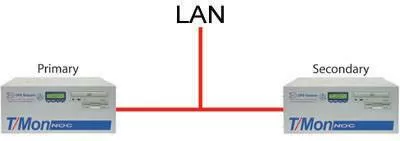Check out our White Paper Series!
A complete library of helpful advice and survival guides for every aspect of system monitoring and control.
1-800-693-0351
Have a specific question? Ask our team of expert engineers and get a specific answer!
Sign up for the next DPS Factory Training!

Whether you're new to our equipment or you've used it for years, DPS factory training is the best way to get more from your monitoring.
Reserve Your Seat TodayThe T/Mon is a reliable central server of alarm monitoring services. In many ways, it is the heart of your network monitoring. It provides instant and comprehensive network status information while supporting archiving and control functions.
However, any equipment can still fail. Hardware outages can occur as a result of circumstances that are beyond your control- vandalism, natural disasters, electrical damage. Since it is only one piece of hardware, and because so many devices are often tied into it, losing T/Mon functionality will render you blind to your network status.
To protect you from this potentially devastating loss of visibility, the T/Mon supports redundancy. To protect against hardware failures, you can deploy a second T/Mon in the same rack as the primary. If the primary fails for any reason, the secondary will automatically take over monitoring (and with the NRI module installed, the secondary T/Mon would take over with an up-to-the-minute picture of alarm events).

But truly powerful redundancy protects against site-specific failures, which is why the T/Mon offers geo-diverse backup capabilities. What would happen if a hurricane, flood, or extended power failure took down your alarm master site? Without a hot-standby T/Mon at a remote location, your alarm visibility would drop to zero at the time you need it most.
Whether your secondary is in the same rack or on the other side of the world, an IP address is all you need to keep it standing by, ready to take over when disaster strikes.In additional to providing fault tolerance and disaster-recovery, deploying a secondary T/Mon has additional benefits. You can database alarms on the secondary and transfer to the primary T/Mon, minimizing monitoring downtime. The secondary T/Mon also serves as backup copy of your database to protect against data loss.
When considering implementing a redundancy system, there are a few questions to consider:
If you currently have a disaster-recovery plan but only one NOC, you have a problem. If your one and only T/Mon were to go down, you would be faced with an unacceptable period of non-visibility. You might be able to go into crisis mode by having additional staff physically man equipment and access elements directly, but that's a lot of work that you wouldn't want to sustain for very long. If you're the kind of company that schedules 3 minutes of downtime for 2 o'clock in the morning, you really must have redundancy.
Keeping your monitoring alive without a T/Mon is a bit like living without a heart, (you can do it, but just for a second!). All it takes is one hurricane, flood, lightning storm, or power outage to totally wipe out your alarm monitoring. Do these disasters happen every day? Absolutely not. But when they do, savvy companies can handle them. If you're serving the public with a national network, you need to establish geo-diverse disaster-recovery capability.
Contact a DPS Sales Engineer at 1-800-693-0351